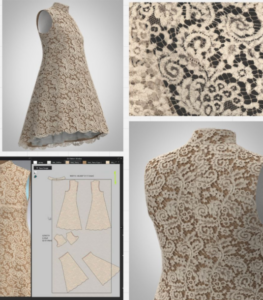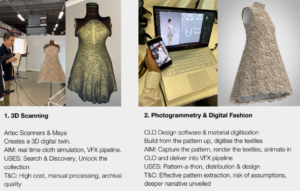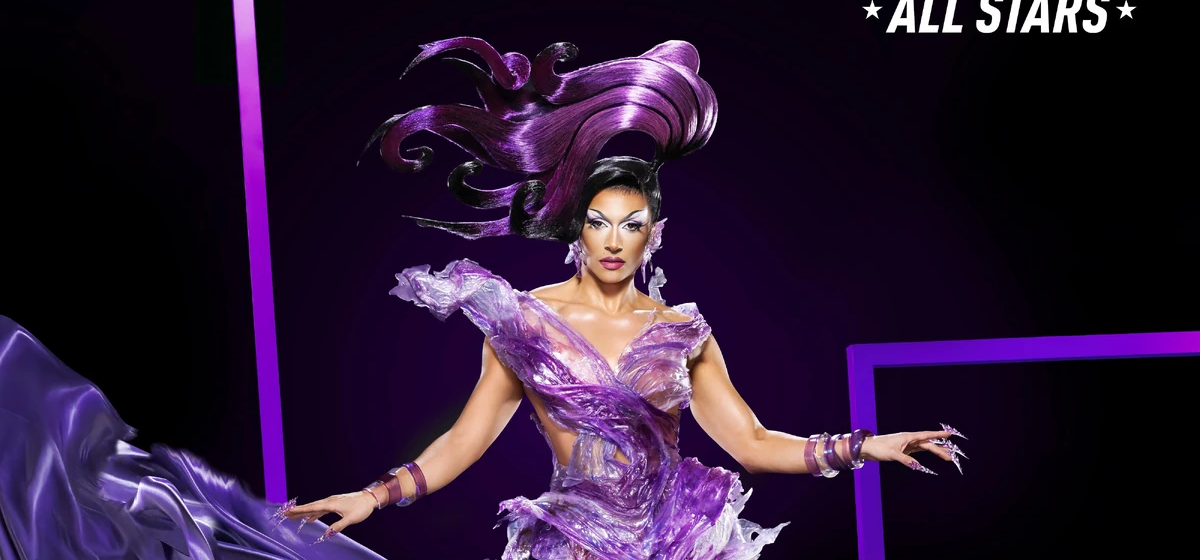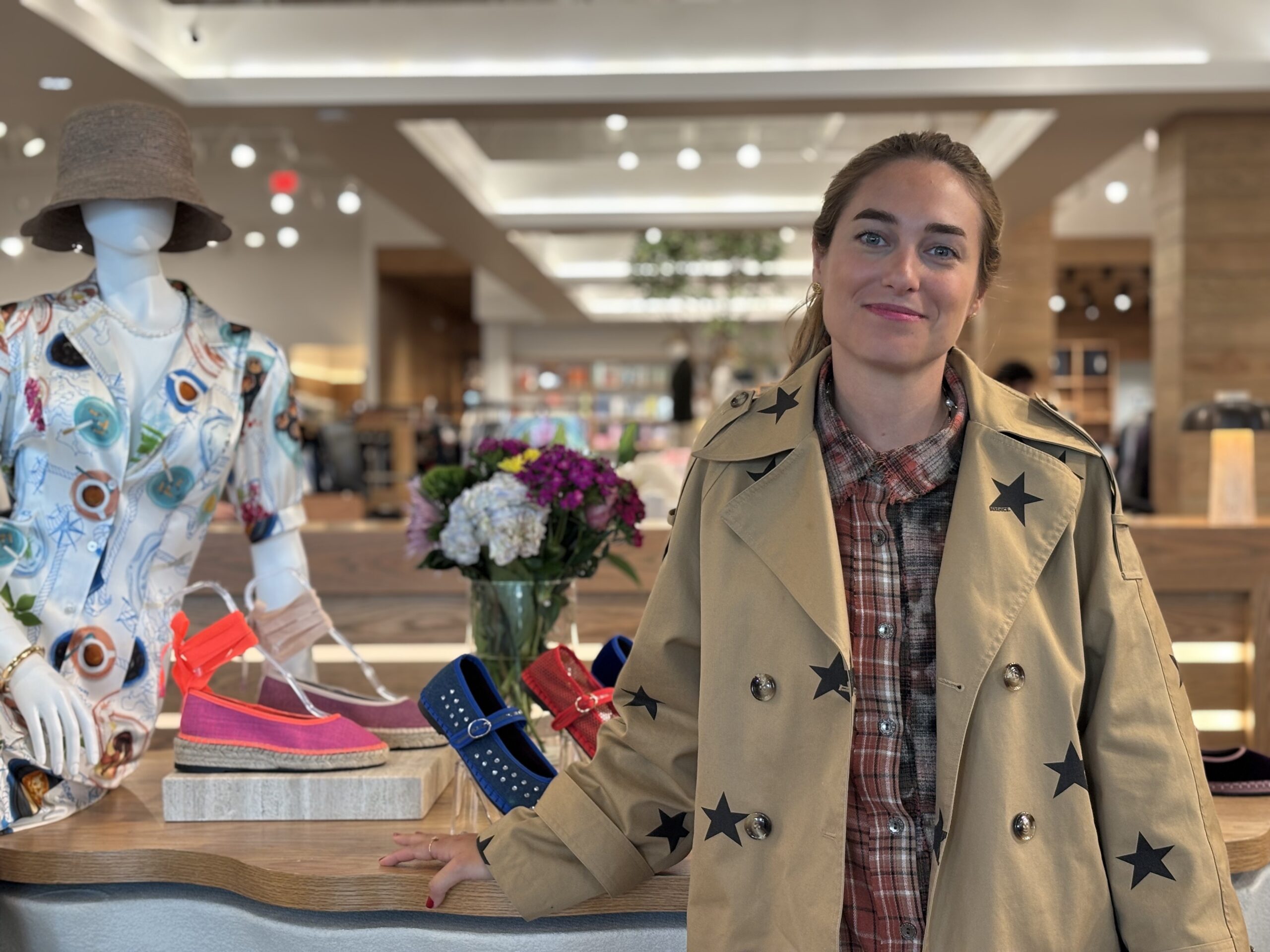Last month Austin’s biggest festival set the city ablaze as SXSW transformed the town into a bustling pop culture hub. Amongst the star-studded movie premieres and glamorous musical acts, SXSW hosted panels covering topics as niche as AI in the Army or Content Creation for Gen Z. Among them, a panel caught my eye titled, “I Digitized THAT J.Lo Dress and Here’s What I Learned” featuring fashion expert Gabrielle Shiner-Hill. Now, I had no idea what digitization meant, but I was eager to find out. Fortunately, Shiner-Hill, a designer of 15 years who has spent the last three digitizing textiles and sourcing, was happy to speak to me about the fascinating world of wardrobe digitization and how it’s revolutionizing the fashion industry. Here’s what I learned from our incredible conversation:
What IS Wardrobe Digitization?
“So essentially, what we’re doing is we’re making digital twins of vintage dresses [and] dresses of cultural significance,” Shiner-Hill explained. This particular project came from the Fashion Museum of Bath. With the help of fashion experts, The Museum has curated a Dress of the Year Collection where they’ve selected a Dress of The Year every year for the past 60 years, “Basically that person says you know this piece defines the moment, that’s what happened with JLo’s dress in February. It’s from the Dress of the Year Collection. And my job has been to work with the Fashion Museum of Bath to increase access to that collection, because essentially the museum is in Bath in the Southwest Of England,” Best known for Jane Austen and Netflix’s Bridgerton.

Currently, the only way to see any of the pieces is to physically go to the museum, “The museum is currently closed while they move into their new home in Central Bath and at this moment they do not have an online public collection.” Shiner-Hill was approached to increase access to the collection by digitizing the items, therefore offering a more informative online experience, “The first thing you could do is you could take flat photographs as we understand, front, back, side” Shiner-Hill explains, “but does that give us enough information if we’ve never seen it in real life?” Ultimately, The Museum wanted more. So Shiner-Hill and her team have been working with the latest in scanning technology to try and make every aspect of the garments come to life.
“We’ve been working with four different types of scanning technology from very expensive handheld scanners that are like $20,000 US dollars, not very accessible.” These are typically used in the automotive industry to scan car parts, however, there are more accessible alternatives, “To an iPhone app called Polycam that you can scan with your own phone, and then you can share a link to see that dress in augmented reality.”
What are the Potential Uses and Benefits of Wardrobe Digitization?
If you’re reading this, your next logical question might be…why? How does scanning and creating digital versions of clothing help us? Well, according to Shiner-Hill, outside of accessibility there are plenty of other benefits.
- Archiving and Preservating Endangered Materials
In the literal sense, “God forbid the museum [and] the storage facility went up in smoke. We’ve got a digital twin of that piece.” But digitizing also helps preserve fabric that may not be available to us forever, “Specifically for historic clothing, the textiles are becoming quite fragile. They’re falling apart. They can’t be handled, so if you scan it once, you can then study and restudy without having to get it out.” This is particularly helpful when studying how to create garments, preserving techniques that could otherwise be a lost art, “What is called endangered material knowledge. So it’s essentially textile techniques and making techniques that are translated and passed down through generations orally. And as people move outside of their culture, they don’t take that oral history. So there’s a whole level of research and digitization around that specifically. Digitization for capturing video work, scanning materials, fashion techniques, and even hand basket weaving techniques, and leather-making techniques. Scanning that in 3D, getting the audio narration as well, and then compiling all of that together in databases.” Currently, there’s a large project being run by the British Museum to work on endangered material knowledge programs, “So that’s where digitization is seen a lot.”

2. Pattern Manipulation
Pattern study is currently taking place, with the hope that one day when the technology is there, we’ll be able to do much more, “What if we could take the pattern or work with the designer to have that pattern and then you could download that pattern and design your own version?” Essentially, if you can digitize a garment, you could then manipulate that digital version, building off of it to create your own design.
3. Historical Research
Similarly, certain patterns from centuries ago may have secret methods that have been lost, “Most people when they look at garments in a museum request to see the inside of them so they can understand the construction, right?” Having a digitized version makes this much more accessible to designers all around the globe, “You also can find out secrets about the garment or rushed work sometimes as well which is really interesting.”
5. Unearthing Stories of Fashion
By looking closer at garments, you can learn more about the history of the piece. Where it came from, how it was sourced, exactly what parts of the world partook in this one article of clothing, “If we think about the Versace (JLO’s dress) it’s a silk bamboo print, but the material was bought in by the house, so where did that material come from? Where were those jewels made? So it’s thinking about the many hands within fashion that come together to make the pieces. We investigated that a little bit with the McQueen piece. We found out that the leather came from Italy, the lace came from France, there were 30 meters of tulle used to make the piece. You can start to get really rich narratives around those pieces.”

6. Video Game & Animation Advancements
Everyone loves to cry to a good Pixar film, and video games are a longstanding way to wind down, but in both fields, there’s one problem; clothing, “Fabric in 3D is represented very poorly right now compared to skin and hair which has had quite a lot of research and work on avatars,” Shiner-Hill says. This is not without reason, what may seem like a simple piece of cloth to us can be incredibly difficult to replicate, “What happens with a textile is every single thread moves independently in real life and the gravity hits every single thread so it’s very complex and difficult to digitize. I’m not an expert in that space but there’s a huge amount of work going into it.” This new technology could lead to a breakthrough that would make these textiles more accessible and better represented in the digital space. Most video games, for example, have a whole network of fans who create Custom Content, and outfits, for avatars to wear and players to easily download. The idea of potentially scanning a designer dress and getting to wear it in say Fortnite, is huge.
The Different Scanning Techniques
During our conversation, Shiner-Hill gave me a breakdown of the main scanners she and her team have been using for digitization, “The first one is what looks like a handheld iron, but it’s a handheld scanner that flashes light at the garment. I did this with the McQueen garment.” Shiner-Hill says, showing me the images of the first scan. This technique is the most expensive, and the scanner itself is from a brand called Artec. It works by creating a digital twin, an exact replica of the garment you can access virtually. Then, we have the second option, “This is where you look at the garment and then you make the pattern. So basically from literally visually looking at the garment, you build the pattern in a software called CLO3D.” This comes with its own set of cons, as with most garments you won’t have the exact pattern on hand so parts of this become guesswork. Meaning, that you may be losing some of the garment’s identity along the way, “This would be a digital version of the garment, not a digital twin.” Personally, this one looked better to me and was marginally cheaper than Artec.

Then came the third, and much more accessible option, “The app Polycam on an iPad or an iPhone or an Android. You can scan it and you get an augmented reality version.” Shiner-Hill explained, showing me the images. While this may not be the most detailed, it doesn’t look bad. You’re able to bring it anywhere, and it’s much more affordable than $20,000. There is a fourth option that Shiner-Hill didn’t get to test on the dresses, “Making a filter,” Shiner-Hill explains, “Just an AR filter and snap that you can wear for a virtual try-on. We were just playing with it, we were trying to get people just to have fun with that piece.” While this option is accessible and fun, it offers marginally less information than proper a scanning.
How To Get Into Digitizing?
If anyone is interested in pursuing a career in digitizing, potentially even in fashion, Shiner-Hill offered some insight on how to make it happen, “You need to have, I like to call it techno joy. You just have to be really interested in technology, and you don’t even have to be really good at it, you just have to be really curious about it, because wherever you go, you will be taught the software. But the one thing they can’t teach you is the curiosity, motivation, and drive to continue learning it.” Shiner-Hill mentioned even before college, messing around with software like Blender or even photo-scanning apps like Polycam and Scaniverse is a good way to start. For anyone heading into college, there are also a few majors to look out for, “Be on the lookout for digital fashion, virtual environments, creative technologies, those are the kind of keywords you’ll be looking at. I wouldn’t suggest even looking up archiving because archiving is still very traditional.” It’s fashion courses and those main words that will get you there.
After my conversation with Gabrielle Shiner-Hill, I feel so excited about the potential of this type of scanning technology. Right now Shiner-Hill is at the forefront of what could be revolutionary for the world of gaming, animation, fashion, accessibility, and information. There are so many applications. Immediately I was envisioning a wealth of knowledge at our fingertips. Entire centuries-old clothing from cultures all around the world to investigate and learn from. And the exciting part is, it’s only a matter of time.











